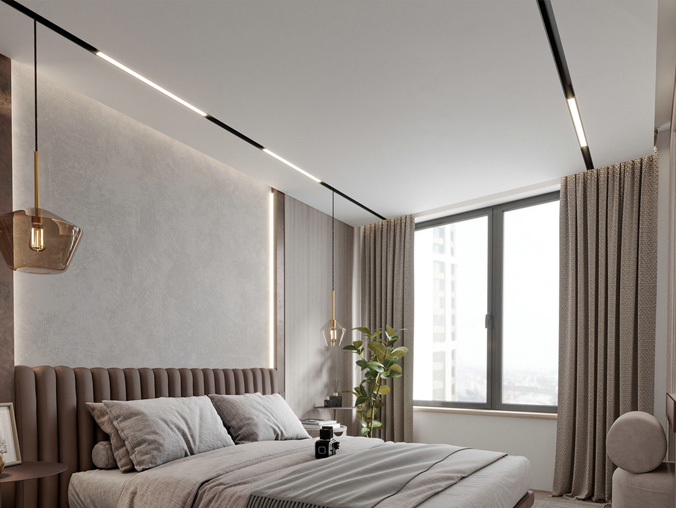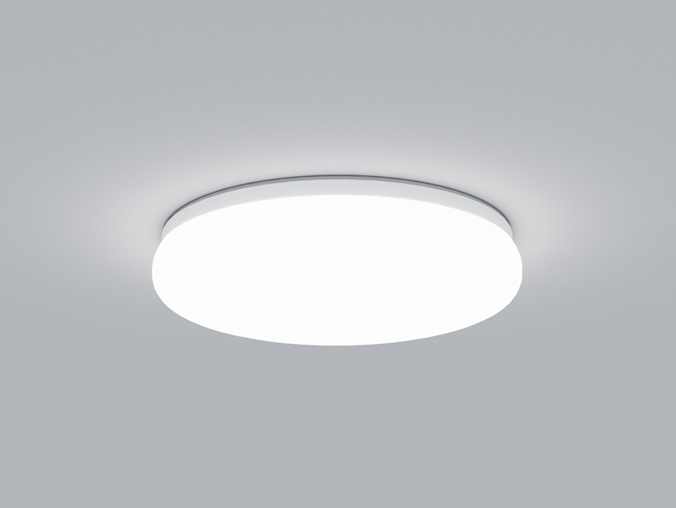

A quality round led ceiling light typically has a lifespan of 30,000–50,000 hours (equivalent to 8–14 years of daily use for 10 hours), far exceeding traditional incandescent bulbs (1,000 hours) or fluorescent lights (8,000 hours). This longevity stems from LED technology’s low heat generation and durability, but actual lifespan depends on three key factors: core component quality (LED chips, drivers), usage conditions (voltage stability, ambient temperature), and maintenance habits. As a professional lighting brand, IMIGY’s Halo Ceiling Lights (premium components) and Bean Ceiling Lights (reliable entry-level) are engineered to maximize lifespan, with most models reaching 50,000+ hours. Below is a breakdown of lifespan determinants, product advantages, and tips to extend longevity.
1. Core Factors Affecting Lifespan of Round LED Ceiling Light
a. LED Chip & Driver Quality
LED chips: Generic chips (low luminous efficiency ≤70lm/W) degrade faster (30,000 hours max), while high-quality chips (e.g., Samsung, Cree) last 50,000+ hours. IMIGY’s Halo Ceiling Lights use Samsung 2835 chips (≥80lm/W) with low light decay (≤10% after 20,000 hours), ensuring long-term brightness.
Drivers: Non-isolated drivers (common in cheap round ceiling light) overheat easily, cutting lifespan to 20,000 hours. IMIGY equips both Halo and Bean with isolated drivers (IP40 dustproof) — Halo adds surge protection (1500V) to resist voltage fluctuations, while Bean uses temperature-controlled drivers, extending lifespan to 50,000 hours.
b. Usage Conditions
Voltage stability: Frequent voltage spikes (common in old neighborhoods) damage drivers. A round led ceiling light in unstable voltage areas may last 20% shorter without a voltage stabilizer. IMIGY’s Halo (built-in voltage protection 100V–240V) adapts to fluctuating power, maintaining lifespan even in harsh conditions.
Ambient temperature: High temperatures (e.g., near heating vents) accelerate LED degradation. A room ceiling light in a 35℃+ environment may lose 15% lifespan. Halo’s aluminum housing (heat dissipation ≥120℃) and Bean’s hollow base reduce heat buildup, suitable for warm climates.
2. IMIGY Products’ Longevity Advantages

a. Halo Ceiling Lights (Premium, 50,000+ Hours)
Component synergy: Samsung chips + isolated drivers + aluminum heat sinks work together to minimize wear. Lab tests show Halo maintains 90% brightness after 30,000 hours (6+ years of daily use) — equivalent to replacing 5 incandescent bulbs.
Dustproof & waterproof: IP40 rating prevents dust from clogging LED gaps (a major cause of overheating). For kitchens or humid areas, Halo’s sealed design avoids driver corrosion, unlike cheap roof lights for ceiling (dust-prone, 20,000 hours max).
Smart dimming protection: As round led ceiling light with dimming, Halo’s 1%–100% smooth dimming avoids current surges (common in abrupt dimming), reducing chip stress and extending lifespan.

b. Bean Ceiling Lights (Entry-Level, 40,000+ Hours)
Cost-effective durability: While priced lower (~\(20–\)25) than Halo, Bean uses reliable Citizen LED chips (≥75lm/W) and basic isolated drivers, ensuring 40,000 hours lifespan (10+ years of 10-hour daily use) — ideal for budget-conscious users.
Simplified design: No complex features (e.g., smart control) reduce failure points. As a classic room roof light (surface-mounted), its straightforward structure (no recessed cavity contact) minimizes damage risks during installation, unlike embedded round ceiling light (prone to cavity dust).
3. Tips to Extend Lifespan of Round LED Ceiling Light
a. Proper Usage
Avoid over-dimming: Long-term operation at ≤10% brightness may cause current instability — keep brightness above 20% for daily use. Halo’s APP presets (e.g., “Reading Mode” = 50% brightness) help maintain optimal levels.
Turn off when unused: While LEDs use less power, prolonged idle operation (e.g., 24/7 on) still accelerates degradation. Use motion sensors for round led ceiling light in low-traffic areas (e.g., hallways) to reduce unnecessary use.
b. Regular Maintenance
Dust cleaning: Wipe the diffuser monthly with a dry cloth — dust buildup blocks heat dissipation. Bean’s smooth surface (easy to clean) and Halo’s sealed design simplify maintenance, unlike textured room ceiling light (dust traps).
Driver inspection: Every 2–3 years, check for driver hum or flickering (early failure signs). IMIGY offers replacement drivers for both Halo and Bean — replacing a faulty driver (cost ~\(5–\)10) can extend lifespan by 10,000+ hours.
A quality round led ceiling light (like IMIGY’s Halo and Bean) typically lasts 8–14 years, with lifespan determined by components, usage, and maintenance. Halo Ceiling Lights (50,000+ hours) cater to users seeking long-term reliability (e.g., homeowners), while Bean Ceiling Lights (40,000+ hours) balance durability and budget (e.g., renters). Both outperform traditional bulbs and cheap round ceiling light (20,000 hours max), making them cost-effective in the long run. To maximize lifespan, follow proper usage and maintenance — and choose trusted brands like IMIGY to avoid subpar components. Contact us to learn more about Halo and Bean’s durability, or get personalized tips for your specific usage scenario.
It is recommended that you upgrade the latest browser
 Chrome
Chrome Firefox
Firefox Edge
Edge